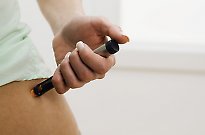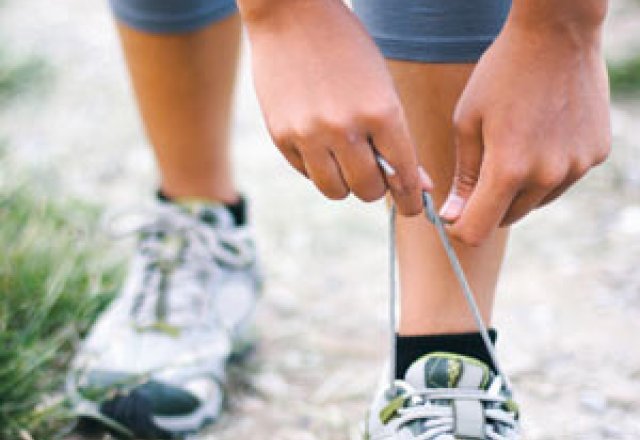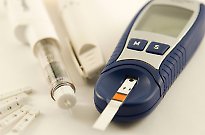
Dealing with diabetes

Diabetes can be a debilitating condition, but fortunately, there are many ways to effectively manage it. Phoenix Arrien goes in search of the natural alternatives.
Type 2 diabetes is Australia's fastest growing chronic disease. Learn how to manage it with the help of natural treatments.
You’re constantly thirsty, yet you constantly need the toilet. You can’t shift the excess weight and to make matters worse, are always hungry. Cuts and sores wont heal and your legs are cramping regularly. So you book an appointment with your GP and he tells you that have you have elevated blood sugar levels. He diagnosis type 2 diabetes. Type 2 diabetes is Australia’s fastest growing chronic disease. Most of us now know at least one person suffering from the condition. Every day, an average of 275 Australians develop diabetes and while it is the sixth leading cause of death in the country, remarkably up to 60 per cent of type 2 diabetes cases are preventable.
Diabetes Australia labels diabetes a ‘chronic disease’. Our bodies produce a hormone called insulin, which converts glucose (sugar) from food into energy. A diabetic doesn’t produce insulin, or at least not in sufficient quantities for the body to make the conversion. Instead of being converted into energy the glucose stays in the blood, so diabetics have higher blood glucose levels than non-diabetics.
There are two types of diabetes, type 1 and type 2. Type 1 diabetes usually appears in people under 30 years. The pancreas – a large gland behind the stomach – stops making insulin, causing the body to burn its own fats as a substitute. Unless treated with daily injections of insulin, people with type 1 diabetes accumulate dangerous chemical substances in their blood from the burning of fat – a potentially life-threatening disease if untreated–with regular insulin injections. The more prevalent type 2 diabetes, usually appears in adults over the age of 50. In the case of type 2 diabetes, the pancreas makes some insulin but not enough for the body to use effectively.
The risk of developing diabetes increases if there is a family history. As lifestyle issues are important in the onset and management of type 2 diabetes, there is a lot that people can do to stave off or manage it. Problems such as high blood pressure, inadequate physical activity, poor diet and being overweight or obese – especially if the excess weight is carried around the waist - are all common characteristics in people pre-disposed to the condition or in those already suffering from it. Type 2 Diabetes is managed with various eating and activity programs, as well as tablets and insulin. Can it be managed naturally? Yes, and no.
PREVENTION IS BETTER THAN CURE
Natural management of type 2 diabetes incorporates activity programs, supplements and a controlled intake of food and drinks. However, the best option is to prevent it in the first place and lifestyle play’s a big part.
A few years ago, Melbourne grandmother Kay Hurwitz watched her husband die from diabetes-related illnesses. So when her doctor diagnosed her with high cholesterol and blood sugar levels – identified as increased risk factors of developing diabetes – she didn’t hesitate to act. Following her GP’s referral, Kay joined a Diabetes Australia and government-sponsored program called Life! It meant attending a series of lectures, followed by advice on diet and activities. Kay found that she was also eligible to have a personal trainer based at her local YMCA gym. The trainer is currently guiding her through a program of strengthening exercises and Kay has also joined a local walking group linked to the local Community Health Centre. Both activities have been identified as effective ways to stave off the onset of diabetes.
“I saw the terrible effects this disease had on my husband’s health as he deteriorated,” recalls Kay. “His death made me determined to do everything possible to prevent this happening to me.”
Kay believes her education and exercise programs are having a positive effect on her blood sugar levels as well as on her life generally. “I’ve lost weight and I feel physically better. I also feel very positive and encouraged by sharing this with the participants and professionals I have met.”
Diabetes is often far easier to prevent than it is to deal with. For many of us, it may be time to heed the warnings, learn what preventative measures need to be taken and make the necessary changes to our lifestyle.
A healthy lifestyle can prevent or assist in the management of diabetes. Stick to these guidelines:
- Maintain a healthy weight
- Take regular, moderate physical exercise - at least 20 minutes, 5 times a week
- Eat a healthy diet, including plenty of fiber and wholegrains, vegetables and lean protein
- Avoid refined carbohydrates and processed foods that are high in salt and sugar
- Manage your blood pressure
- Manage your cholesterol levels
- Do not smoke
- Limit alcohol consumption
Type 1 diabetes symptoms
- Thirst
- Passing more urine than normal
- Tiredness and lethargy
- Always feeling hungry
- Cuts healing slowly
- Unexplained weight loss
- Mood swings
- Blurred vision
- Itching, skin infections
- Headaches
- Leg cramps
Type 2 diabetes symptoms
- Excessive thirst
- Passing more urine
- Tiredness and lethargy
- Always feeling hungry
- Cuts healing slowly
- Gradual weight gain
- Mood swings
- Blurred vision
- Itching, skin infections
- Headaches
- Leg cramps
Get checked out by your doctor as soon as possible if you think you may be at risk. A simple test will reveal any cause for concern and it is far better to catch it early.
Natural treatments that are currently being explored for type 2 diabetes include:
Ginseng
US studies have shown that North American ginseng (Panax quinquefolius) may improve blood sugar control and glycosylated haemoglobin levels (a form of haemoglobin in the blood used to monitor blood glucose levels).
Chromium
Boosting Chromium – an essential trace mineral that has an important role in carbohydrate and fat metabolism and helps body cells properly respond to insulin – may be effective. However, studies are far from conclusive.
Cinnamon
Some studies have found that cinnamon improves blood glucose control in people with type 2 diabetes.
Zinc
The mineral zinc assists in the production and storage of insulin. Zinc can be found in fresh oysters, ginger root, lamb, pecans, split peas, egg yolk, rye, beef liver, lima beans, almonds, walnuts, sardines, chicken, and buckwheat.
Magnesium
Magnesium is a mineral found in some green leafy vegetables, nuts, seeds and whole grains and in nutritional supplements. It can help regulate blood sugar levels, muscle and nerve function, heart rhythm, immune function, blood pressure and bone health. However, some studies have shown negative reactions in sufferers of type 2 diabetes.
Aloe Vera Gel
A Japanese study evaluated the effect of aloe vera gel on blood sugar. Researchers isolated a number of active phytosterol compounds from the gel that were found to reduce blood glucose and glycosylated hemoglobin levels.
Vanadium
Vanadium is a trace mineral present in soil and many foods. Vanadium has been found to improve insulin sensitivity and reduce blood sugar in people with type 2 Diabetes. It appears to mimic many of the actions of insulin in the body.
COMPLEMENTARY MEDICINE
According to the World Health Organisation, Australians take complementary medicines at least once a day and as a nation, we spend more money on them than on conventional medicines. Before taking any natural medicine for diabetes, you need to consult the medical practitioner who is supervising your diabetic treatment. They will determine whether or not the preparation is safe for diabetics and be able to assess how it will affect your condition.
Find out more about dealing with diabetes or join the debate on Facebook.


